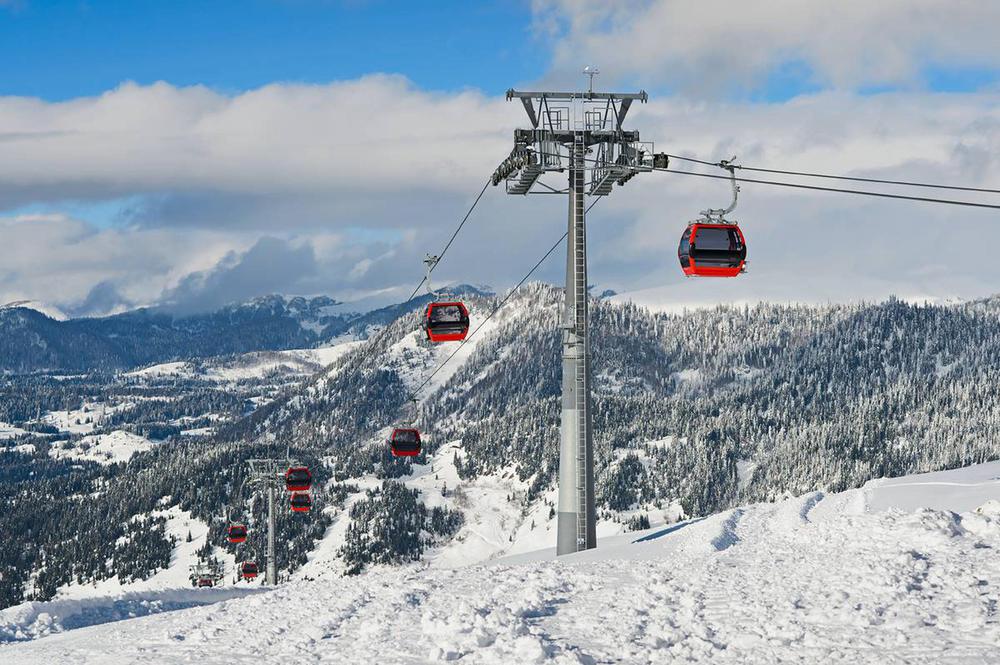Svaneti, a region in the country of Georgia, is increasingly recognized for its exceptional heli-skiing opportunities. This article delves into the specifics of heli-skiing in Svaneti, providing fact-based insights and essential information for those passionate about this adventurous sport.
The Emergence of Heli-Skiing in Svaneti
Heli-skiing, the adventure sport involving a helicopter to reach remote snow-covered slopes, has gained significant traction in Svaneti. The region's expansive and diverse mountain terrain, combined with substantial annual snowfall, makes it a sought-after destination for heli-skiing enthusiasts.
Geography and Climate: Ideal for Heli-Skiing
Located in the northwestern part of Georgia, Svaneti is surrounded by the majestic peaks of the Greater Caucasus mountain range. The region experiences a prolonged winter season, usually from December to April, ideal for heli-skiing. Svaneti's average annual snowfall contributes to a consistently deep snowpack, essential for quality skiing conditions.
Distinguished Heli-Ski Spots in Svaneti
Mt. Ushba:
While the peak of Mt. Ushba reaches an impressive 4,690 meters (15,387 feet), the skiing slopes accessed via helicopter typically range between 2,000 to 3,500 meters (6,560 to 11,480 feet) in altitude. This area is famed for its challenging descents, attracting seasoned skiers.
Tetnuldi:
The Tetnuldi ski area, separate from the peak itself which stands at 4,858 meters (15,938 feet), offers a variety of runs at altitudes ranging from 2,200 to 3,100 meters (7,218 to 10,170 feet). It caters to a range of skill levels, from intermediate to expert.
Laila Range:
The Laila Range, with its diverse terrain, provides skiing opportunities at altitudes from 2,000 to 3,200 meters (6,560 to 10,500 feet). It's suitable for both intermediate and advanced skiers looking for a mix of challenging and enjoyable runs.
Safety and Regulations
Safety in heli-skiing is of utmost importance. Operators in Svaneti adhere to rigorous safety protocols, including comprehensive avalanche risk assessments and well-developed emergency response strategies. Participants are usually required to carry standard avalanche safety equipment, such as a beacon, shovel, and probe.
Impact on Travel and Tourism
Heli-skiing has notably influenced tourism in Svaneti, drawing adventure-seekers from around the globe. This influx of tourists has spurred growth in local economies and led to enhancements in regional infrastructure, including the development of hotels and improved transportation services.
Accommodations and Accessibility in Svaneti
For adventurers planning a heli-skiing trip to Svaneti, there's a variety of lodging options to suit different preferences and budgets. Mestia, the central town of Svaneti, serves as the primary base for heli-skiing operations and offers accommodations ranging from luxury hotels to cozy, family-run guesthouses. Accessibility to Svaneti has improved significantly, with regular flights from Georgia's capital, Tbilisi, to Queen Tamar Airport, which is in close proximity to Mestia. For those preferring road travel, the journey from Tbilisi to Svaneti offers scenic views and well-maintained roads.
Equipment and Skill Requirements
Given the challenging nature of heli-skiing in Svaneti, having the right equipment is crucial. Most local heli-ski operators provide options for renting high-quality ski and safety gear. It is important for participants to possess a proficient level of skiing or snowboarding skill, as heli-skiing involves navigating unmarked and often unpredictable mountain terrain.
Environmental Considerations and Sustainability
The pristine natural environment of Svaneti is one of its greatest attractions. Heli-ski operators and visitors alike are becoming increasingly conscious of their environmental impact. Efforts to minimize ecological footprints include adhering to designated skiing areas to avoid wildlife disturbances and focusing on sustainable tourism practices.
Immersive Cultural Experiences
A trip to Svaneti for heli-skiing also presents a unique opportunity to engage with the region's rich cultural heritage. Svaneti is known for its ancient towers, UNESCO World Heritage Sites, and vibrant local traditions. Visitors can explore local museums, enjoy traditional Georgian cuisine, and interact with the Svans, known for their hospitality and deep-rooted cultural traditions.
Seasonal Variations and Best Times to Visit
The optimal period for heli-skiing in Svaneti is typically from late December to early April. During this time, the region is blanketed in deep snow, providing excellent conditions for skiing. However, weather patterns can vary, and it's advisable for travelers to check current conditions and forecasts before planning their trip.
Preparing for Your Heli-Ski Adventure
Travelers interested in heli-skiing in Svaneti should prepare adequately. This includes physical conditioning, as heli-skiing can be physically demanding, and ensuring travel insurance that covers heli-skiing activities. Additionally, it's important to have a basic understanding of avalanche safety.
Conclusion: An Unforgettable Adventure
Heli-skiing in Svaneti offers an unparalleled experience for skiing enthusiasts. With its stunning natural beauty, challenging terrain, and rich cultural backdrop, Svaneti is not just a destination but an adventure that promises thrills, excitement, and unforgettable memories.

 Adrenaline Rush
Adrenaline Rush
 Gudauri Ski Resort
Gudauri Ski Resort
 Tetnuldi Skiing
Tetnuldi Skiing
 Bakuriani Skiing
Bakuriani Skiing
 Goderdzi Skiing
Goderdzi Skiing




